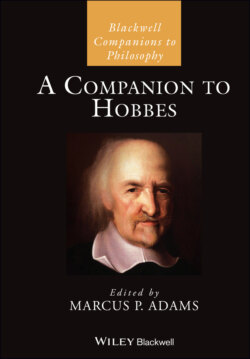Читать книгу A Companion to Hobbes - Группа авторов - Страница 58
4.4 Conclusion
ОглавлениеThis chapter has contrasted Hobbes’s statements about natural philosophy, and the structure of his philosophy, generally, with two cases from his practice of explaining in optics and natural philosophy. These cases show that rather than providing deductions from first philosophy or geometry, within particular explanations Hobbes blended everyday experience (the “that”) with appeals to causal principles from geometry (the “why”). In doing so, Hobbes treats physical bodies as if they are mathematical objects. Furthermore, Hobbes provides no bridge principles that would expose a reduction of these phenomena to minute particles. This “mixing” of two areas (geometry with everyday experience), places natural philosophy in the middle of his bifurcation of knowledge into scientia and cognitio. On the one hand, humans lack certain knowledge since they are not the creators of natural phenomena, but on the other hand natural philosophy strives to be more than mere prudence and, when mixed with causal principles from geometry, can offer suppositional certainty.
